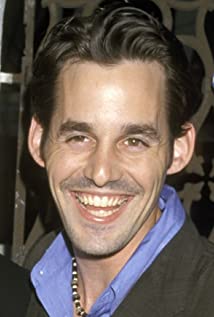Does George Zucco Dead or Alive?
As per our current Database, George Zucco has been died on 28 May, 1960 at Hollywood, California, USA.
🎂 George Zucco - Age, Bio, Faces and Birthday
When George Zucco die, George Zucco was 74 years old.
| Popular As |
George Zucco |
| Occupation |
Actor |
| Age |
74 years old |
| Zodiac Sign |
Capricorn |
| Born |
January 11, 1886 (Manchester, England, UK) |
| Birthday |
January 11 |
| Town/City |
Manchester, England, UK |
| Nationality |
UK |
🌙 Zodiac
George Zucco’s zodiac sign is Capricorn. According to astrologers, Capricorn is a sign that represents time and responsibility, and its representatives are traditional and often very serious by nature. These individuals possess an inner state of independence that enables significant progress both in their personal and professional lives. They are masters of self-control and have the ability to lead the way, make solid and realistic plans, and manage many people who work for them at any time. They will learn from their mistakes and get to the top based solely on their experience and expertise.
🌙 Chinese Zodiac Signs
George Zucco was born in the Year of the Dog. Those born under the Chinese Zodiac sign of the Dog are loyal, faithful, honest, distrustful, often guilty of telling white lies, temperamental, prone to mood swings, dogmatic, and sensitive. Dogs excel in business but have trouble finding mates. Compatible with Tiger or Horse.
At 22, George Zucco decided to begin his stage career in earnest in the Canadian provinces in 1908. In the course of the following decade, he also performed in an American vaudeville tour with his young wife, Frances, in a routine called "The Suffragette.
" As World War I grew in scale, Zucco returned to England to join the army. He saw action and was wounded in his right arm by gunfire. Subsequent surgery partially handicapped the use of two fingers and a thumb.
However, having honed his theatrical talents, he proceeded to enter the London stage scene and was rewarded with a developing career that made him a leading man as the 1920s progressed. By 1931 he began working in British sound films, his first being The Dreyfus Case (1931) with Cedric Hardwicke.
What followed were 13 B-grade movies through 1935, until The Man Who Could Work Miracles (1936) with Roland Young and Ralph Richardson. Zucco was on his way to America and Broadway by late 1935. He had signed to play Disraeli opposite Helen Hayes in the original play "Victoria Regina," which ran from December 1935 to June 1936.
After that came a Hollywood contract and his first American picture, Sinner Take All (1936). Zucco had a sharp hawk nose, magnetic dark eyes, and an arching brow that fit well with authoritative and intimidating characters.
That same year, he was in the second installment of the "Thin Man" series, followed by a series of supporting roles in nine films in 1937, usually typed as an English doctor or lord character. They were good supporting roles in "A" films, but he was also taking on darker characters.
This was evident in Charlie Chan in Honolulu (1938) and more so with Arrest Bulldog Drummond (1938). Here, he was Rolf Alferson, alias the criminal mastermind "The Stinger," who could administer a poisonous sting from a needle at the tip of his cane.
It was a typical pop movie in the pulp mystery/horror genre with the usual sort of ending, but it started him on the road as a Hollywood arch villain. That same year, he was cast as Professor Moriarty, the brilliant archenemy of the world's most famous detective in The Adventures of Sherlock Holmes (1939).
Also that year, he and Hardwicke reunited to play the dark clerical heavies in the classic The Hunchback of Notre Dame (1939). Although into the early 1940s Zucco was still getting some variety in shady roles, he was increasingly accepting parts as mad doctors--ancient and otherwise--starting with The Mummy's Hand (1940), the sequel to the original The Mummy (1932).
Although this was made by the relatively major Universal Pictures, Zucco began grinding out outlandish horror stuff for bottom-of-the-barrel Producers Releasing Corp. (PRC). It would be incorrect to say he sold out to the horror genre, though, even if horror buffs have made him their own.
Into the later 1940s, he was still giving good accounts as nobles, judges and not-so-mad doctors in such "A" hits as Captain from Castile (1947), Joan of Arc (1948), and Madame Bovary (1949). Zucco was in real life an engaging personality and was also known as a very dependable actor.
He suffered a stroke not long after his final film, David and Bathsheba (1951), once more in Egyptian garb but this time not even credited. He retired and lived on in fragile health. He evidently recovered his health enough to be offered the role of the mad scientist in Voodoo Woman (1957), but he declined.
About that time, his health required a move to a nursing home, where he lived out his last years with dignity.
George Zucco WIFE, FAMILY, KIDS
- Stella Francis (12 July 1930 - 28 May 1960) ( his death) ( 1 child)
George Zucco Movies
- The Cat and the Canary (1939) as Lawyer Crosby
- The Mad Monster (1942) as Dr. Cameron
- Dead Men Walk (1943) as Dr. Lloyd Clayton / Dr. Elwyn Clayton
- The Adventures of Sherlock Holmes (1939) as Professor Moriarty
Important Facts about George Zucco
Often played doctors (usually sinister) or professors.
George Zucco trend

















